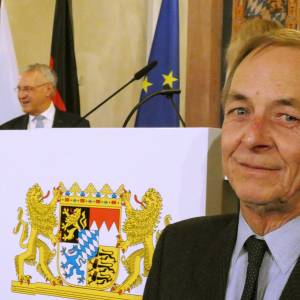Not Coconut Milk
Around 1967/8 it was becoming clear to BP that the operations in Trinidad were not commercially viable for them. I think back then bigger matters were taking up working capital, such as the enormous costs of drilling in Prudhoe Bay in Alaska. Gas was first discovered in December 1967 and then the whole thing took off.
I guess in a well-meant socially responsible move, BP came up with the idea described below. My father was put in charge of the project.
His first task was to bulldoze the golf course which he had built out of the jungle in the late 1950s and turn it into fields growing food for dairy cows. Apart from the loss of "his" golf course, he loved the project and below is what he wrote for a journal "World Crops". Sadly he "cropped" the article and glued it in a photo album, but without Page 2.
I will be showing some of the photos on backblips.
----------------------------------------------------------------------------------------------------------
P B. Gowing was born in 1913 in Norfolk, England, of a well known farming family. After serving his articles with a firm of chartered surveyors specialising in agricultural estate management, he qualified as a Chartered Surveyor (Agricultural Division).
He left to take up an appointment as surveyor to BP in Trinidad in 1947 where he is still employed. One of his many duties was to convert an extensive and rather neglected cocoa, coffee and citrus estate into a more viable unit. He also planned the practical aspects of running an intended agricultural smallholdings scheme.
Due to the large and ever-increasing expenditure on imported foods, and especially on dairy products, the Trinidad government has been encouraging local production. In fact, it is hoped that the island can not only become self-supporting but be able in time to export many of the food products previously imported.
This, in a country whose oil industry was tending to decline, and whose ever-increasing population has an estimated 15% unemployment figure, was a major factor in the decision of British Petroleum Co Ltd to assist the Trinidad government's policy by starting a modern dairy farm of its own.
There was little previous practical experience in intensive dairying in the country on which to be guided, and the following brief account of the planning of this dairy and the results so far might be of considerable interest and help to others.
Nestles, who had been encouraged by the Trinidad government to set up a plant for processing fresh milk and manufacturing tinned milk, had agreed to collect all the fresh milk we could produce; there was therefore no marketing problem for the milk. The question. of the disposal of bull calves solved itself with an increasing local demand by small farmers to rear and fatten these young stock.
Canadian Holsteins I
Due to the unavailability of sufficiently high-yielding animals in Trinidad, the choice of Canadian Pedigree Holstein (Friesian) heifers 7-8 months in calf was taken after a visit had been made to Canada to inspect this type of animal. A supply was readily available six weeks after placing the order. Previously, the Trinidad government had imported a lot of these heifers for stocking smallholders' farms, and had suffered a rather alarming percentage of deaths through tick fever (Canada is a tick-free country). Acclimatisation had also proved a worrying factor. It was therefore our intention to keep these animals in standings until after calving down, and then to only let them out to graze at night and in the early mornings.
A site was chosen in an undulating area of very old cocoa and coffee, some of which had been abandoned and was in high wood. The soil data was put on large-scale maps as interpreted from the Land Capability Survey for the South of Trinidad. These soils were mainly clay shales and clay alluviums which, though on the heavy side, were the best available. The pH averaged 5.5, and the soils were deficient in major plant nutrients.
Initially it was decided to import 60 of these in-calf heifers with the idea of increasing the herd to a more economical……….
World Crops, January/February 1970

Comments New comments are not currently accepted on this journal.